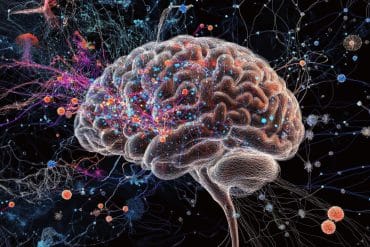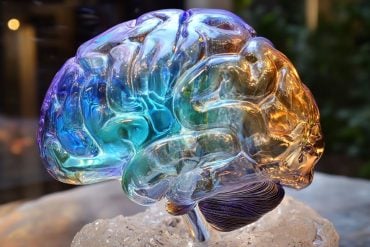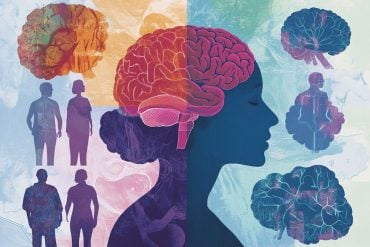Summary: Researchers report tau proteins appear to spread through the brain via the extracellular space surrounding neurons.
Source: Columbia University.
Neural activity accelerates its spread through the brain.
A toxic Alzheimer’s protein can spread through the brain–jumping from one neuron to another–via the extracellular space that surrounds the brain’s neurons, suggests new research from Columbia University Medical Center.
The study has been published online in Nature Neuroscience.
The spread of the protein, called tau, may explain why only one area of the brain is affected in the early stages of Alzheimer’s but multiple areas are affected in later stages of the disease.
“By learning how tau spreads, we may be able to stop it from jumping from neuron to neuron,” said Karen Duff, PhD, professor in the department of pathology and cell biology (in the Taub Institute for Research on Alzheimer’s Disease and the Aging Brain) and professor of psychiatry (at New York State Psychiatric Institute.) “This would prevent the disease from spreading to other regions of the brain, which is associated with more severe dementia.”
The idea the Alzheimer’s can spread through the brain first gained support a few years ago when Duff and other Columbia researchers discovered that tau spread from neuron to neuron through the brains of mice.
In the new study, lead scientist Jessica Wu, PhD, a former post-doctoral researcher at the Taub Institute who is currently at Massachusetts Institute of Technology, discovered how tau travels by tracking the movement of tau from one neuron to another. Tau, she found, can be released by neurons into extracellular space, where it can be picked up by other neurons. Because tau can travel long distances within the neuron before its release, it can seed other regions of the brain.

“This finding has important clinical implications,” explained Dr. Duff. “When tau is released into the extracellular space, it would be much easier to target the protein with therapeutic agents, such as antibodies, than if it had remained in the neuron.”
A second interesting feature of the study is the observation that the spread of tau accelerates when the neurons are more active. Two team members, Abid Hussaini, PhD, and Gustavo Rodriguez, PhD, showed that stimulating the activity of neurons accelerated the spread of tau through the brain of mice and led to more neurodegeneration.
Although more work is needed to examine whether those findings are relevant for people, “they suggest that clinical trials testing treatments that increase brain activity, such as deep brain stimulation, should be monitored carefully in people with neurodegenerative diseases,” said Dr. Duff.
The study is titled, “Neuronal activity enhances tau propagation and tau pathology in vivo.”
Authors included Jessica W. Wu, S. Abid Hussaini, Isle Bastille, Gustavo A. Rodriguez, Kelly Rilett, Hongjun Fu, Rick A. C. M. Boonen, Mathieu Hreman, Eden Nahmani, Sheina Emrani, Y Helen Figueroa, Catherine L. Clelland, and Karen E. Duff (Taub Institute, Columbia University Medical Center, New York, NY), Ana Mrejeru (Department of Neurology, Columbia University Medical Center, New York, NY), David W. Sanders and Marc I. Diamond (Center for Alzheimer’s and Neurodegenerative Diseases, University of Texas Southwestern Medical Center, Dallas, TX), Casey Cook (Department of Neuroscience, Mayo Clinic, Jacksonville, FL), and Selina Wray (Institute of Neurology, University College, London, UK).
Funding: This work was supported by a BrightFocus Foundation fellowship, NIH/NINDS grants NS081555 and NS074874, Cure Alzheimer’s Fund, the Parkinson’s Disease Foundation, NIH/NIA grants AG050425 and AA19801, and the NIHR Queen Square Dementia Biomedical Research Unit.
The authors declare no competing financial interests.
Source: Karin Eskenazi – Columbia University
Image Source: This NeuroscienceNews.com image is credited to Karen E. Duff, PhD, Columbia University Medical Center.
Original Research: Abstract for “Neuronal activity enhances tau propagation and tau pathology in vivo” by Jessica W Wu, S Abid Hussaini, Isle M Bastille, Gustavo A Rodriguez, Ana Mrejeru, Kelly Rilett, David W Sanders, Casey Cook, Hongjun Fu, Rick A C M Boonen, Mathieu Herman, Eden Nahmani, Sheina Emrani, Y Helen Figueroa, Marc I Diamond, Catherine L Clelland, Selina Wray and Karen E Duff in Nature Neuroscience. Published online June 20 2016 doi:10.1038/nn.4328
[cbtabs][cbtab title=”MLA”]Columbia University. “Alzheimer’s Tau Protein Spreads Through Brain Via Extracellular Space.” NeuroscienceNews. NeuroscienceNews, 19 July 2016.
<https://neurosciencenews.com/tau-alzheimers-extracellular-4703/>.[/cbtab][cbtab title=”APA”]Columbia University. (2016, July 19). Alzheimer’s Tau Protein Spreads Through Brain Via Extracellular Space. NeuroscienceNews. Retrieved July 19, 2016 from https://neurosciencenews.com/tau-alzheimers-extracellular-4703/[/cbtab][cbtab title=”Chicago”]Columbia University. “Alzheimer’s Tau Protein Spreads Through Brain Via Extracellular Space.” https://neurosciencenews.com/tau-alzheimers-extracellular-4703/ (accessed July 19, 2016).[/cbtab][/cbtabs]
Abstract
Neuronal activity enhances tau propagation and tau pathology in vivo
Tau protein can transfer between neurons transneuronally and trans-synaptically, which is thought to explain the progressive spread of tauopathy observed in the brain of patients with Alzheimer’s disease. Here we show that physiological tau released from donor cells can transfer to recipient cells via the medium, suggesting that at least one mechanism by which tau can transfer is via the extracellular space. Neuronal activity has been shown to regulate tau secretion, but its effect on tau pathology is unknown. Using optogenetic and chemogenetic approaches, we found that increased neuronal activity stimulates the release of tau in vitro and enhances tau pathology in vivo. These data have implications for disease pathogenesis and therapeutic strategies for Alzheimer’s disease and other tauopathies.
“Neuronal activity enhances tau propagation and tau pathology in vivo” by Jessica W Wu, S Abid Hussaini, Isle M Bastille, Gustavo A Rodriguez, Ana Mrejeru, Kelly Rilett, David W Sanders, Casey Cook, Hongjun Fu, Rick A C M Boonen, Mathieu Herman, Eden Nahmani, Sheina Emrani, Y Helen Figueroa, Marc I Diamond, Catherine L Clelland, Selina Wray and Karen E Duff in Nature Neuroscience. Published online June 20 2016 doi:10.1038/nn.4328






